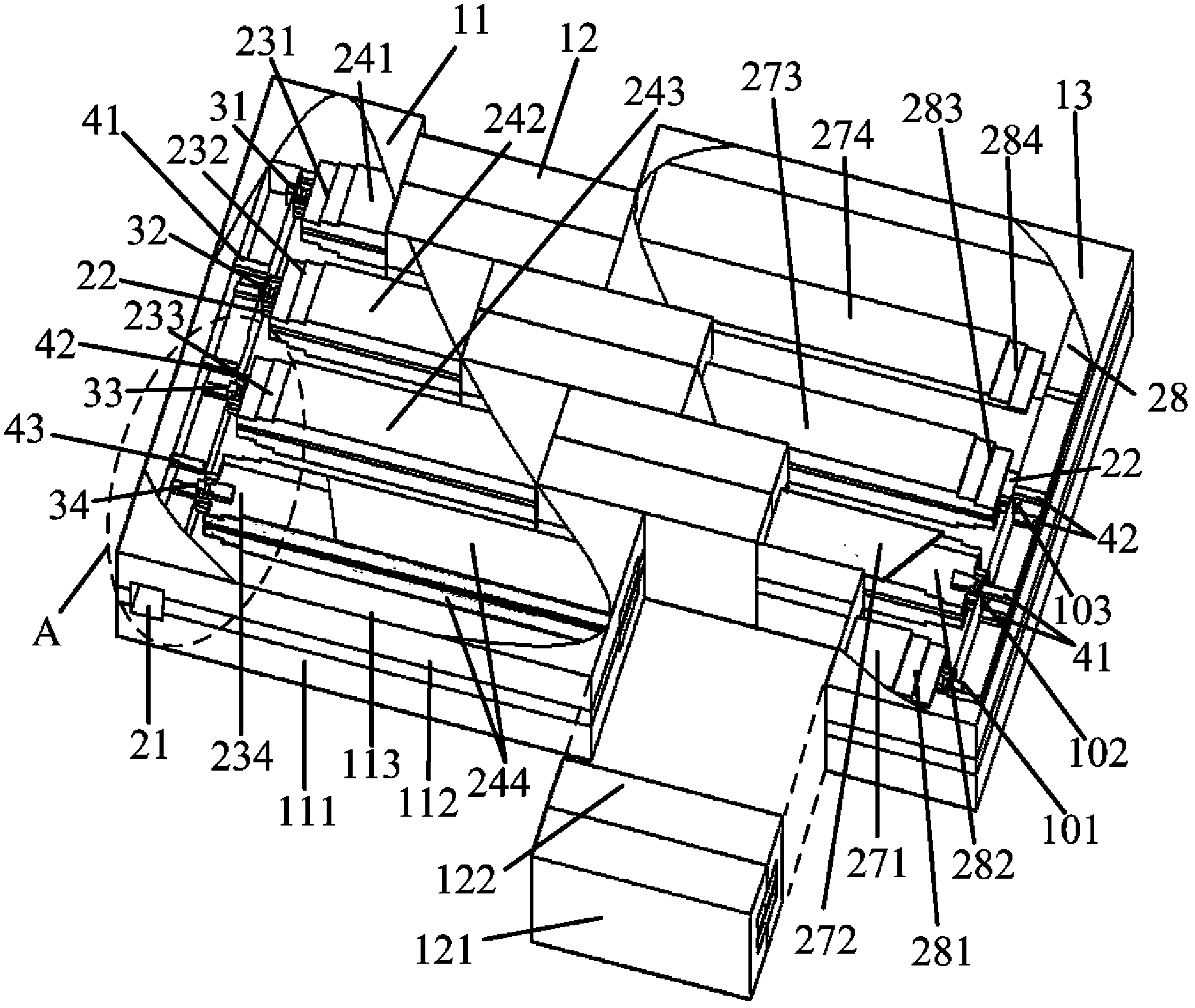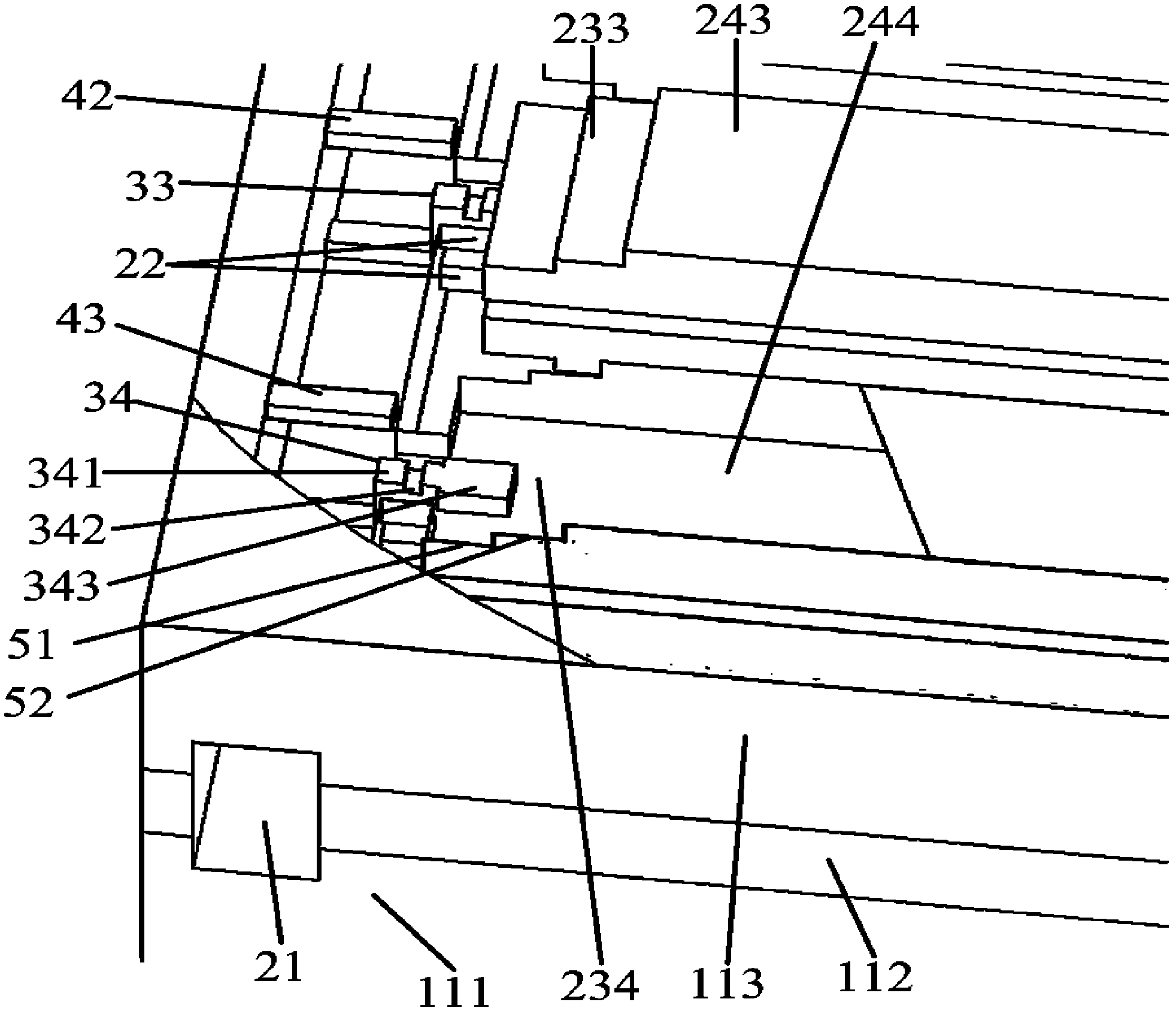Broadband Operating Waveguide Traveling Wave Power Synthesizing Amplifier
A power combiner and power amplifier technology, applied in waveguide devices, electrical components, connecting devices, etc., can solve problems such as inconsistent input signals, inconsistent output port phases of power dividers, and inconsistent microwave signal path lengths, etc., to achieve high Efficiency power synthesis, realizing power synthesis, and increasing the number of synthesis channels
- Summary
- Abstract
- Description
- Claims
- Application Information
AI Technical Summary
Problems solved by technology
Method used
Image
Examples
Embodiment 1
[0035] This embodiment uses a ridge waveguide probe type coupling structure to illustrate the basic idea of the present invention. Such as figure 1 As shown in the perspective view of the synthesizing amplifier composed of ridge waveguide probe-type coupled broadband in-phase or anti-phase waveguide traveling-wave power dividers, the overall structure is composed of a power divider 11 , an amplifier module 12 and a power combiner 13 . The power combiner 13 is consistent with the power divider 11 in terms of structure, except that it is placed in the form of rotating butt joint with the power divider along the vertical direction. The power splitter 11 includes an input standard waveguide 21, a ridge waveguide probe type coupling structure 31-34, a matching diaphragm 41-43, a matching transition structure 231-234 from the ridge waveguide probe type coupling structure to an output waveguide, and an output waveguide 241 -244 and other parts. The power is input from the input w...
Embodiment 2
[0044] Such as Figure 7 As shown, the figure illustrates a microstrip probe-type coupled in-phase output power divider structure. The only difference between this embodiment and the first embodiment is that this embodiment uses a microstrip probe type coupling structure to illustrate the basic idea of the present invention. The main difference between this structure and the ridge waveguide probe type coupling waveguide traveling wave power divider is that the form of the coupling structure is changed to a microstrip probe, correspondingly, a matching transition structure from the microstrip to the output waveguide is introduced. This structure still adjusts the output phase of the power splitter to be consistent by extending the output waveguide. The design principle of the microstrip probe is basically the same as that of the ridge waveguide probe structure. The matching transition structure from the microstrip to the output waveguide adopts the probe transition form. By...
Embodiment 3
[0046] Such as Figure 8 As shown, the figure illustrates a coaxial probe type coupling in-phase output power divider structure. The only difference between this embodiment and the first embodiment is that the coupling structure of the power divider is changed to a coaxial probe, and correspondingly, a matching transition structure from the coaxial to the output waveguide is introduced. This structure still adjusts the output phase of the power splitter to be consistent by extending the output waveguide. The design principle of the coaxial probe is basically the same as that of the ridge waveguide probe structure. The matching transition structure from the coaxial to the output waveguide adopts the probe transition form. By inserting the coaxial probe 261 on the wide side of the waveguide 262, a short-circuit surface is set at a certain distance from the probe to realize the transition from the coaxial to the waveguide 262. The waveguide 262 forms an output waveguide through...
PUM
 Login to View More
Login to View More Abstract
Description
Claims
Application Information
 Login to View More
Login to View More - R&D
- Intellectual Property
- Life Sciences
- Materials
- Tech Scout
- Unparalleled Data Quality
- Higher Quality Content
- 60% Fewer Hallucinations
Browse by: Latest US Patents, China's latest patents, Technical Efficacy Thesaurus, Application Domain, Technology Topic, Popular Technical Reports.
© 2025 PatSnap. All rights reserved.Legal|Privacy policy|Modern Slavery Act Transparency Statement|Sitemap|About US| Contact US: help@patsnap.com



